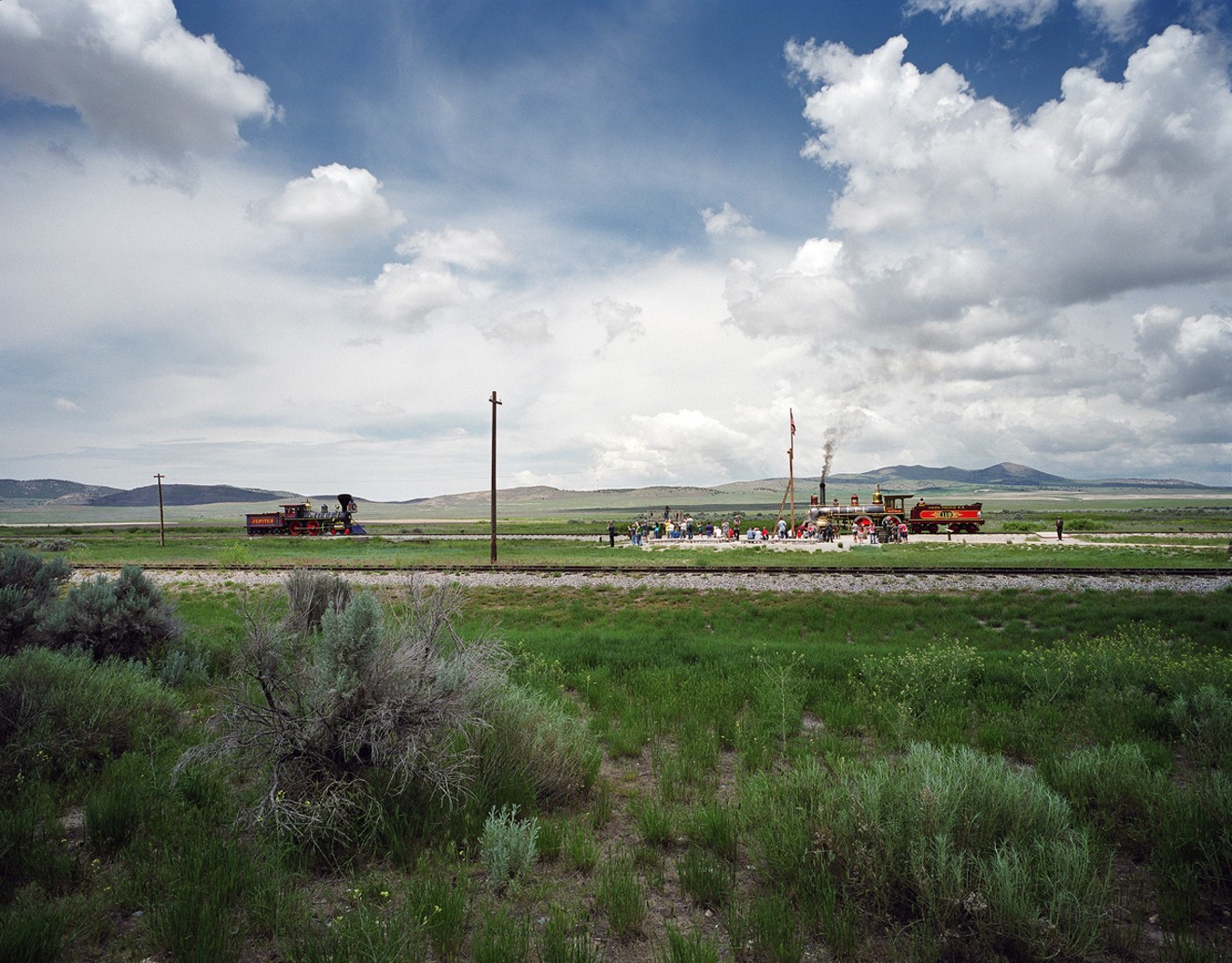The festivities begin with Tom Judd: Disruption, a large selection of retro representational paintings by the Philadelphia-based artist, who’s originally from Utah. The paintings look antique, with matte surfaces that appear very dry, but all kinds of things are going on in them that tell the viewer they represent new ways of approaching-old fashioned imagery. In “Absolved,” for example, Judd’s depiction of a volcano has a very nineteenth-century look, a sensibility that’s undercut by the painting being splayed over multiple, various-sized panels that are actually book covers. “Absolved” is surrounded by more than a dozen little Judd paintings, most featuring appropriated old-timey figures set in front of Western landscapes. Some of these, such as “Jesus Smoking,” a cheesy chromolithograph in which Jesus is seen smoking a cigarette, are quite amusing.
From the Judds, it’s just a hop, skip and a jump to the next solo, Jerry Kunkel: RECON TEXT, dedicated to another painter who looks back at familiar sources for inspiration. Kunkel spent thirty years teaching art at the University of Colorado Boulder; he retired a dozen years ago and moved to Lawrence, Kansas. A hyperrealist with an unusual taste in subject matter, Kunkel mines the history of art and the history of kitsch with equal rigor, sometimes bringing both together in the same painting. In “The Male Gaze With Squirrel Figurine,” for instance, Kunkel depicts with fanatical accuracy a mass-produced reproduction of an academic painting of an artist at his easel. Looking closely, you can see that the print has been rendered as if it were thumbtacked to a wall. Kunkel has embellished the scene in a number of ways; in addition to the squirrel in the foreground, the image the artist is painting has been replaced by a full-figure rendition of Popeye. Kunkel is also a master of trompe l’oeil, and you’d swear that his “Name Image, Say Word” is simply a chunk of knotty pine with the word “OKAY” stenciled across it in red instead of what it actually is: a meticulously painted facsimile of the board and painted word.

Clockwise from top left: "Common Imperative 2.5," "Future" and "Name Image, Say Word," by Jerry Kunkel, oil on canvas.
Courtesy of Robischon Gallery

From left: "Trigger" (on pedestal), "Without End" and "End," by Terry Maker, cast polyurethane foam.
Courtesy of Robischon Gallery

"Meridian II," by Jim Sanborn, bronze and projected light installation.
Courtesy of Robischon Gallery
One more thing links these five solos: curator Jennifer Doran, who made the inspired call to share the distinctive outings of the five artists simultaneously.
Tom Judd, Jerry Kunkel, Edie Winograde, Terry Maker and Jim Sanborn, through March 3 at Robischon Gallery, 1740 Wazee Street, 303-298-7788, robischongallery.com.












